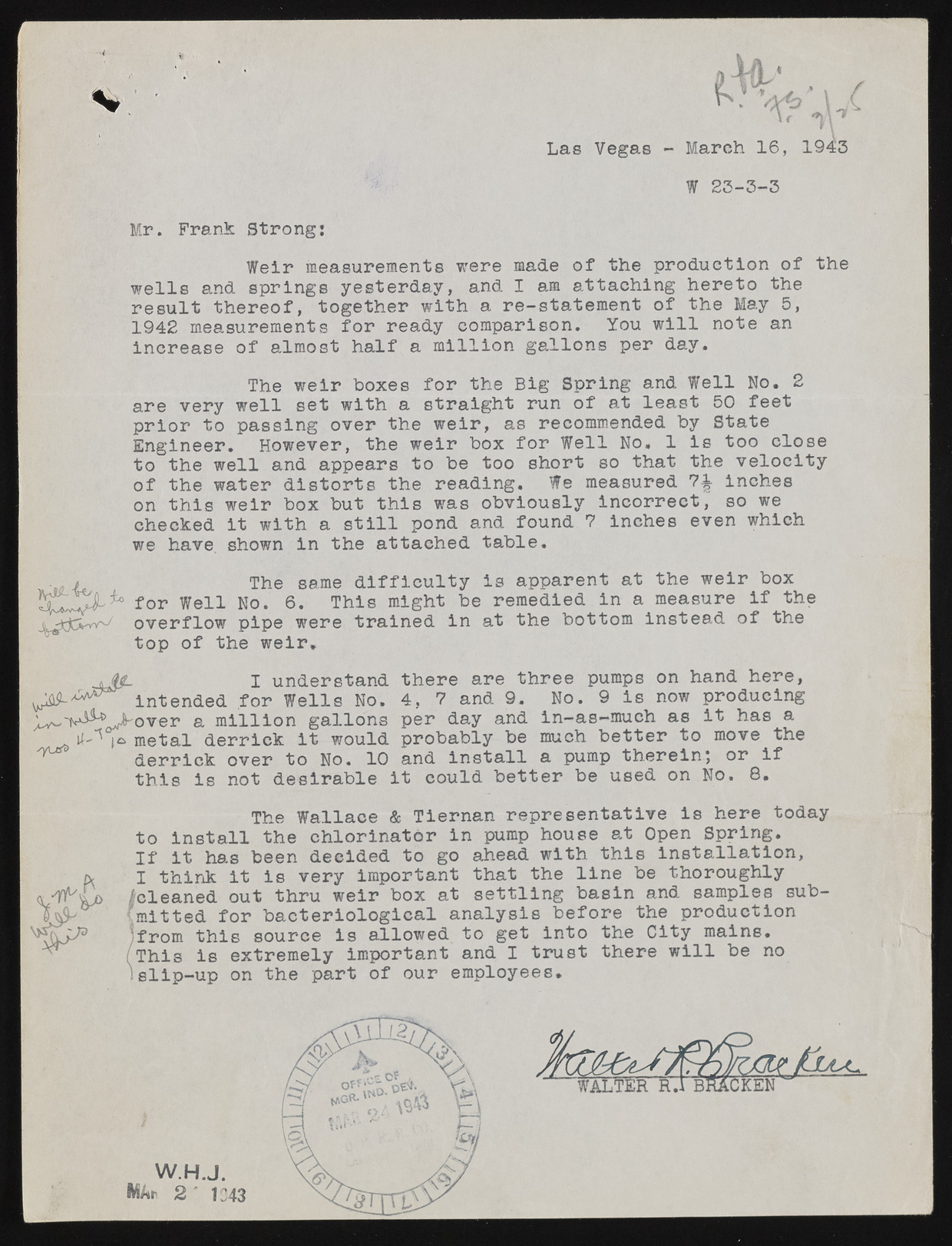Copyright & Fair-use Agreement
UNLV Special Collections provides copies of materials to facilitate private study, scholarship, or research. Material not in the public domain may be used according to fair use of copyrighted materials as defined by copyright law. Please cite us.
Please note that UNLV may not own the copyright to these materials and cannot provide permission to publish or distribute materials when UNLV is not the copyright holder. The user is solely responsible for determining the copyright status of materials and obtaining permission to use material from the copyright holder and for determining whether any permissions relating to any other rights are necessary for the intended use, and for obtaining all required permissions beyond that allowed by fair use.
Read more about our reproduction and use policy.
I agree.Information
Digital ID
Permalink
Details
More Info
Rights
Digital Provenance
Publisher
Transcription
Las Vegas - March 16, 1943 W 23-3-3 Mr. Frank Strong: Weir measurements were made of the production of the wells and springs yesterday, and I am attaching hereto the result thereof, together with a re-statement of the May 5, 1942 measurements for ready comparison. You will note an increase of almost half a million gallons per day. The weir boxes for the Big Spring and Well No. 2 are very well set with a straight run of at least 50 feet prior to passing over the weir, as recommended by State Engineer. However, the weir box for Well No. 1 is too close to the well and appears to be too short so that the velocity of the water distorts the reading. We measured 7^- inches on this weir box but this was obviously incorrect, so we checked it with a still pond and found 7 inches even which we have, shown in the attached table. . j The same difficulty is apparent at the weir box for Well No* 6* Thls miSht be remedied in a measure if the overflow pipe were trained in at the bottom instead of the top of the weir. I understand there are three pumps on hand here, intended for Wells No. 4, 7 and 9. No. 9 is now producing j^0ver a million gallons per day and ln-as-much as it has a wA (c. metal derrick it would probably be much better to move the derrick over to No. 10 and install a pump therein5 or if this is not desirable it could better be used on No. 8. The Wallace & Tiernan representative is here today to install the chlorinator in pump house at Open Spring. If it has been decided to go ahead with this Installation, I think it is very important that the line be thoroughly icleaned out thru weir box at settling basin and samples sub- {mitted for bacteriological analysis before the production jfrom this source is allowed to get into the City mains. (This is extremely important and I trust there will be no lslip-up on the part of our employees.

